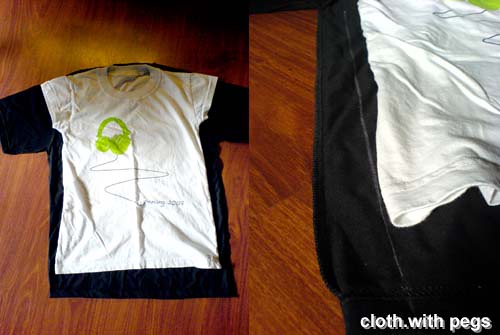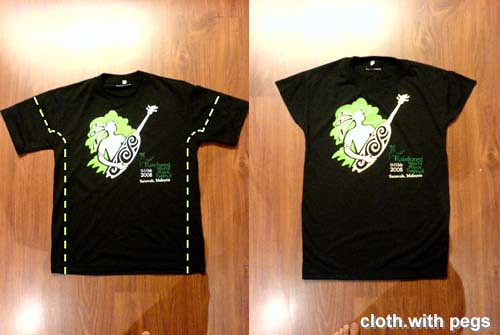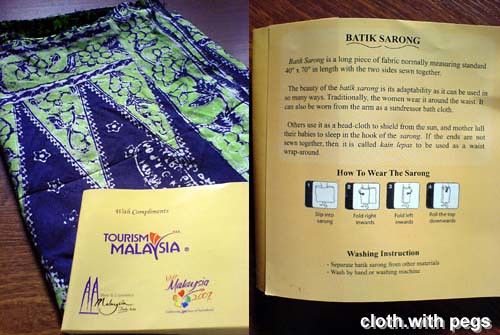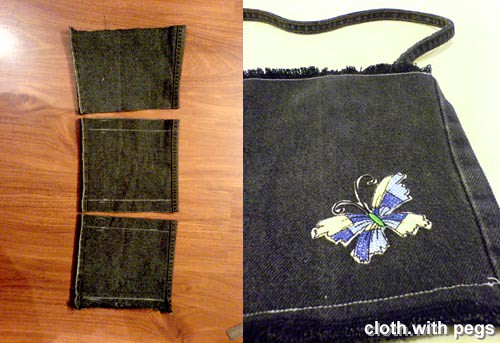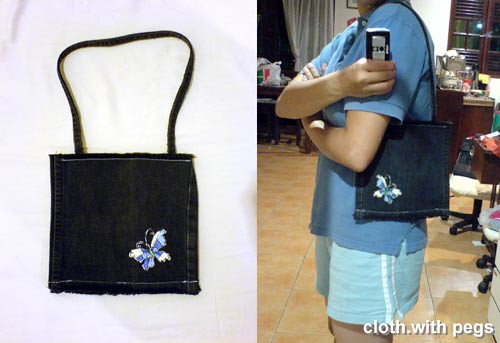What do you do with socks that are no longer a pair?
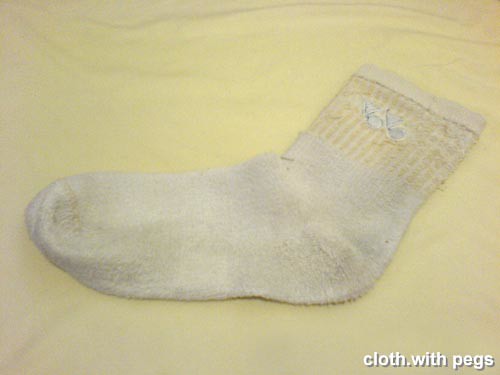
Somehow, one side seemed to always disappear into the washing machine or the dryer. So with all the one-sided socks left, I have made one into a pin cushion. Something definitely useful for me now that I am sewing more.
Instead of the conventional blob of a pin cushion, I made one which could double up for my spell casting sessions, one in the shape of a voodoo doll ... a stuffed fat voodoo doll.
First, I rolled a lump of polyester doll stuffing and pushed it right into the end of the sock (I shall call it in singular form from now onwards). Then I tied a knot around it and stitched it through a good amount of times, to make sure the filling stays in place. Then, the eyes. One side was just a stitch and the other a loose button.

Okay, now for the arms. Sewn 2 layers of sock fabric together in a 'U' shape and cut it out. Repeated for the other arm. Then, flipped it over and stuffed it with filling.


Holding the open end or the arm, I pinched it into place and sewed it on from the inside.
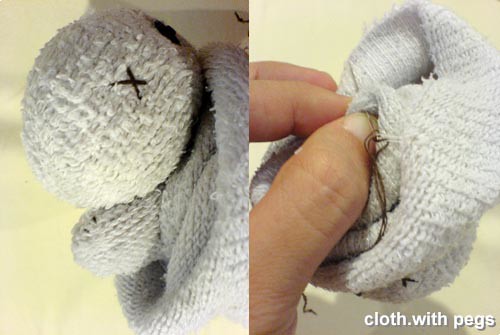
Preparing a bigger ball of polyester filling for the body.

Figured that I should give him a little nip&tuck, I sewed portions of the fabric from the inside, kind of like darting. Gave him the stuffing and sewed it in. At the bottom, I gave him legs by splitting the fabric and hemmed the sides.
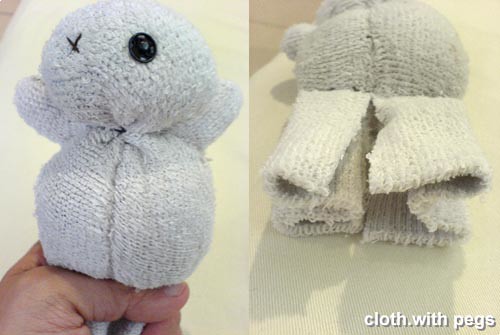
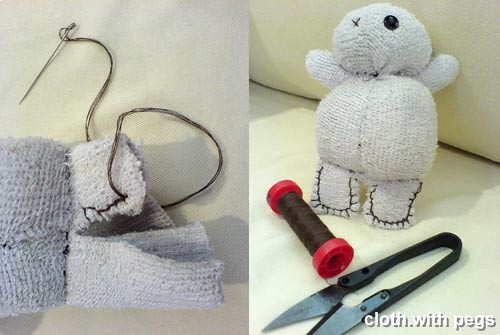
To hold the pincushion on my wrist for flexibility and easy access to pins, I made a strap also from the excess sock fabric. Flipped it inside out and added the velcro.
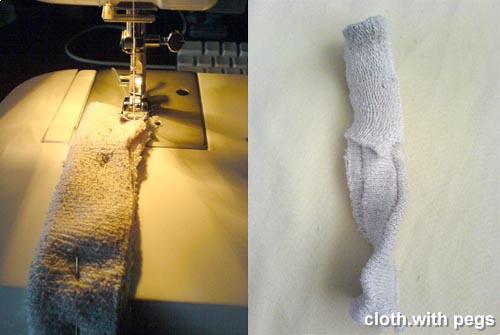
Since the velcro worked fine with only the 'hooky' side, I did not add the 'carpet-ty' side.
Sewed the strap to the back of the doll and we have a Voodoo Doll Pin Cushion.
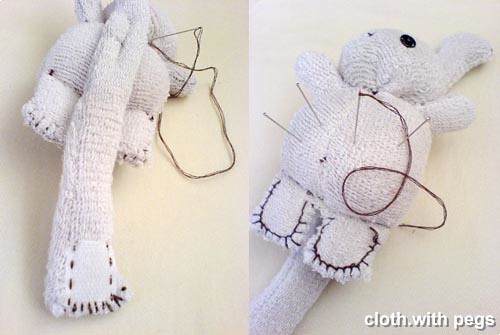
Parading around with IT on my wrist. MUAHAHAHAH....
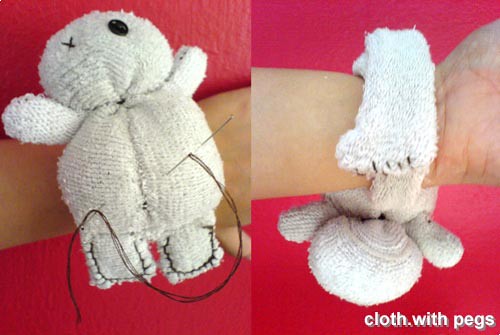
 Our Resident-fabric-shredder, Hiro. I mean the cat. The one on the other end of the fabric strip is Gette.
Our Resident-fabric-shredder, Hiro. I mean the cat. The one on the other end of the fabric strip is Gette. The back of one of the dress, as modelled by Hannah (Mag's body double, our professional duct-tape dummy)
The back of one of the dress, as modelled by Hannah (Mag's body double, our professional duct-tape dummy)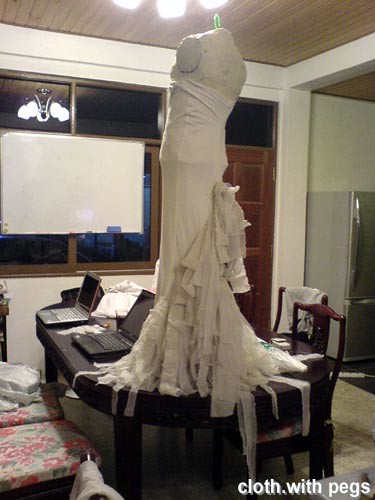 Checking out the proportion of things before calling it a night, so we can all go back and sleep knowing we have achieved something for the day, while dreaming up more gimmicks for the next session.
Checking out the proportion of things before calling it a night, so we can all go back and sleep knowing we have achieved something for the day, while dreaming up more gimmicks for the next session.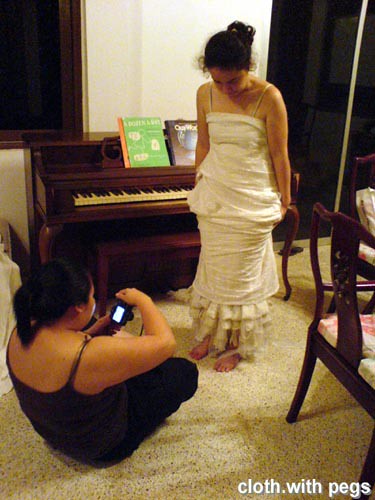 More Work-in-progress here.
More Work-in-progress here.





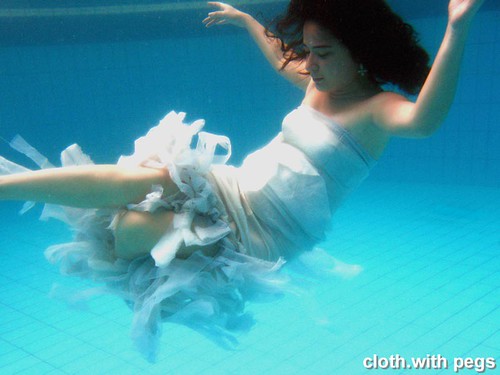
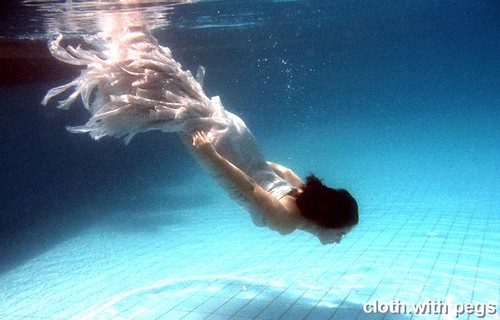
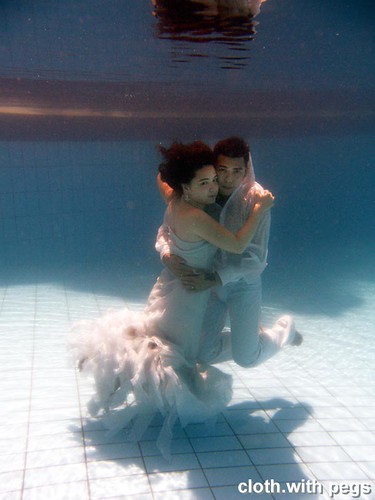



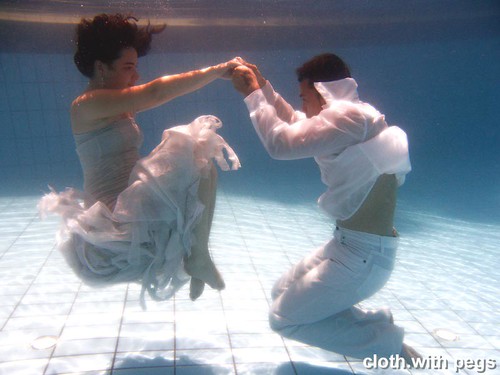


 From Gette's drier point of view,
From Gette's drier point of view, 

